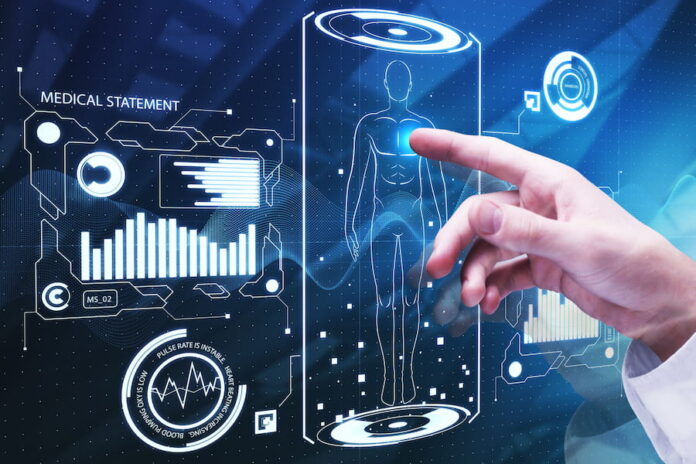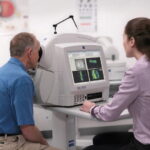What is Health IT?
In the United States, the drug overdose crisis is still prevalent and continues to increase at pace. The CDC (Centers for Disease Control and Prevention) cites that an estimated 107,000 Americans died as a result of drug overdoses in 2021, which is up almost 15% from 2020 when there were 93,655 deaths estimated.
Steps are of course being taken to mitigate this crisis and prevent an escalation in deaths. One of the strategies being implemented is the use of Health IT.
Health IT allows health care providers to effectively and more cost-efficiently manage the care of their patients through private and secure online health records, so that all their details are recorded and available digitally and can be shared and accessed by a wide system of care providers. Health IT helps to facilitate the best and most appropriate level of care across the board, whether that’s for a routine medical visit or check-up, or a medical emergency. Care can be effectively co-ordinated and both patients and their families are able to participate more fully in decisions regarding their own healthcare. The information stored digitally will also help in diagnosing health problems and conditions earlier and assist in reducing medical care errors.
The health information technology initiative from the AHRQ forms part of the strategy of the United States to integrate health IT into primary care.
How will health IT help to address the drug overdose crisis?
Between 2018 and 2022, the ONC and the CDC came together to develop an interactive resource and tool named the Integration Framework. This was developed as part of ongoing efforts to use health IT in an attempt to bring down the increasing rate of deaths in the country due to drug overdose. The Integration Framework offers guidance to states to allow them to effectively integrate medical care providers’ health IT systems and state Prescription Drug Monitoring Programs (PDMPs).
The Integration Framework offers advice on how to help counteract the crisis with the implementation of advanced technologies like electronic clinical decision support (CDS) systems. The Framework can also assist in furthering and scaling PDMP integration with health IT systems in various care settings like primary care, hospitals, and outpatient facilities. Health IT systems will incorporate electronic health record (EHR) systems, pharmacy systems and health information exchanges.
At state-level, clinicians’ guided utilization of PDMPs is an encouraging intervention, with the aim of improving the prescribing of opioids, supporting safer and more beneficial care of all patients, and bettering clinical practice. PDMP data and EHR systems coming together will address barriers to care due to access issues, and mean a beneficial link is in place between the healthcare community and the experts and researchers working on making Health IT the most advantageous and useful it can be.
Read Also
- Optimizing CT Protocols: The Hidden Key to Efficiency and Cost Savings in Radiology
 Introduction: Why CT Protocol Optimization Matters Computed Tomography (CT) is a cornerstone of modern diagnostic imaging, providing critical information across nearly every medical specialty. However, maximizing the value of CT — both clinically and financially — requires more than just advanced hardware. The real secret lies in the optimization of CT protocols. When CT protocols… Read more: Optimizing CT Protocols: The Hidden Key to Efficiency and Cost Savings in Radiology
Introduction: Why CT Protocol Optimization Matters Computed Tomography (CT) is a cornerstone of modern diagnostic imaging, providing critical information across nearly every medical specialty. However, maximizing the value of CT — both clinically and financially — requires more than just advanced hardware. The real secret lies in the optimization of CT protocols. When CT protocols… Read more: Optimizing CT Protocols: The Hidden Key to Efficiency and Cost Savings in Radiology - The Role of Carbide Burs in Modern Dental Procedures
 As a result of this procedures need to be well coordinated and to this end, precision tools are used by dental practitioners. Among the most essential tools in a dentist’s arsenal are carbide burs, which have revolutionized various aspects of dental work. Today’s dentistry cannot work without these tools as they are both strong, sharp,… Read more: The Role of Carbide Burs in Modern Dental Procedures
As a result of this procedures need to be well coordinated and to this end, precision tools are used by dental practitioners. Among the most essential tools in a dentist’s arsenal are carbide burs, which have revolutionized various aspects of dental work. Today’s dentistry cannot work without these tools as they are both strong, sharp,… Read more: The Role of Carbide Burs in Modern Dental Procedures - Detection of Diabetic Retinopathy: The AI Advantage
 Diabetic retinopathy (DR) is a leading cause of blindness among working-age adults, affecting millions worldwide. The prevalence of DR is alarmingly high, affecting an estimated 34.6 million people globally. In the United States alone, it is estimated that 7.7 million adults have some form of diabetic retinopathy. How Does Diabetes Affect the Eye? Most of… Read more: Detection of Diabetic Retinopathy: The AI Advantage
Diabetic retinopathy (DR) is a leading cause of blindness among working-age adults, affecting millions worldwide. The prevalence of DR is alarmingly high, affecting an estimated 34.6 million people globally. In the United States alone, it is estimated that 7.7 million adults have some form of diabetic retinopathy. How Does Diabetes Affect the Eye? Most of… Read more: Detection of Diabetic Retinopathy: The AI Advantage - Advances in Digital Health: Transforming Modern Healthcare
 The healthcare landscape is undergoing a seismic shift with the advent of digital health technologies. These innovations are not just modern conveniences; they are transformative tools that bridge gaps in accessibility, improve patient outcomes, and empower individuals to take charge of their health. From wearable devices to telehealth and artificial intelligence, digital health is creating… Read more: Advances in Digital Health: Transforming Modern Healthcare
The healthcare landscape is undergoing a seismic shift with the advent of digital health technologies. These innovations are not just modern conveniences; they are transformative tools that bridge gaps in accessibility, improve patient outcomes, and empower individuals to take charge of their health. From wearable devices to telehealth and artificial intelligence, digital health is creating… Read more: Advances in Digital Health: Transforming Modern Healthcare - The Latest Advancements in Urology Procedures
 Urology, the branch of medicine concerning the urinary system and male reproductive organs, has seen remarkable advancements in recent years. Technological innovations have led to more precise, less invasive, and increasingly successful procedures that promise better outcomes for patients. From state-of-the-art robotics to personalized medicine approaches, the field of urology is evolving at a rapid… Read more: The Latest Advancements in Urology Procedures
Urology, the branch of medicine concerning the urinary system and male reproductive organs, has seen remarkable advancements in recent years. Technological innovations have led to more precise, less invasive, and increasingly successful procedures that promise better outcomes for patients. From state-of-the-art robotics to personalized medicine approaches, the field of urology is evolving at a rapid… Read more: The Latest Advancements in Urology Procedures
Examples of health IT
Smart phone Apps
The use of purpose-built Apps, devised by clinical experts, to aid a patient’s recovery from substance abuse and addiction. The apps can support in all practical and emotional aspects of recovery and are available in an immediate way.
Telehealth
Video conferencing, webinars and advice-based broadcasts can offer remote care that may otherwise be unable to be accessed.
ePrescription of controlled substances
This can help safeguard against the misuse of substances and reduce clinicians’ workloads.
Support tools for clinical decision-making
Online tools to support prescribing, treatment, and outcomes.
The exchange of great numbers of quality data
This can help with predictive analysis, decisions, and the utilization of artificial intelligence, in the development of machines and machine learning.
The Search and Rescue Initiative
This is a site of tools and resources to help doctors identify, address, and make reductions in any opioid misuse in their practice.
The drug overdose crisis in the US is not one that it going to disappear overnight, but the integration of health IT into current systems does offer a positive step in the right direction that, with technological advances, clinicians and health professionals can make some inroads into lessening the number of deaths due to drug overdoses.
About Author
George J. Newton is a business development manager at Dissertation writing services who writes on the subject of health and well-being.






